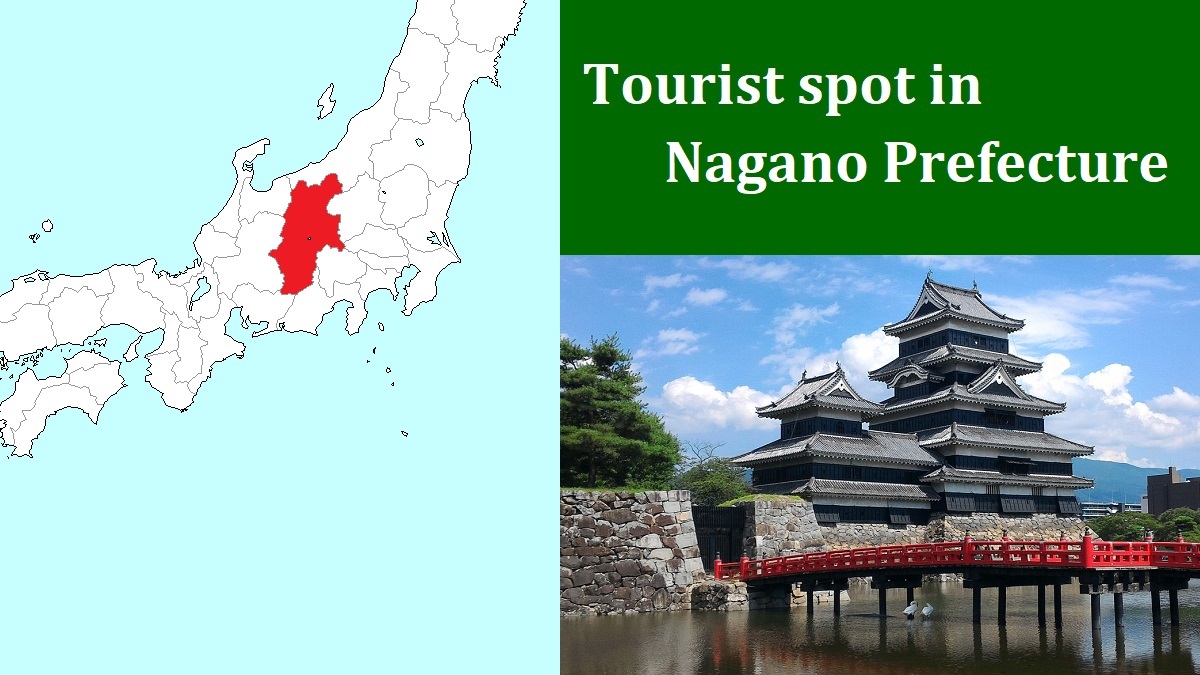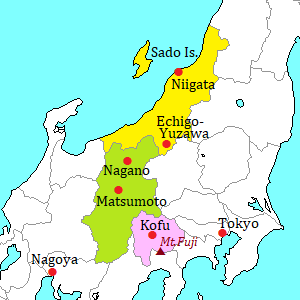Obuse town [小布施]
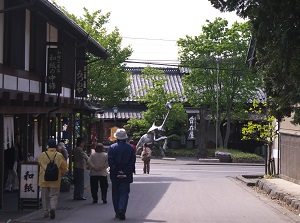
Obuse town
Photo by Nagano Tourism Organization
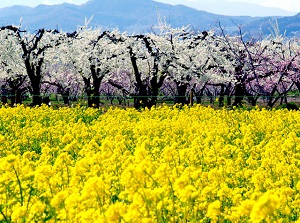
Scenery around Obuse town in spring
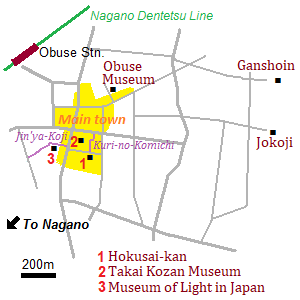
Obuse is a small town located about 12 km northeast of Nagano city.
This town is attracting the tourists as an old town with historic spots in recent years.
Takai Kozan (1806-1883) was born into a wealthy sake brewery in this town.
When he was young, he had studied Neo-Confucianism and fine arts in Kyoto and Edo (current Tokyo) for 16 years.
So he had formed friendships with various thinkers and artists during the period.
After he came back to Obuse, some his friends sometimes visited him.
Katsushika Hokusai (1760-1849) was one of them.
He was an Ukiyoe (Japanese woodblock prints) artist of worldwide fame.
Kozan provided an atelier for Hokusai in this town and invited him.
Hokusai had stayed here for last 4 years of his life.
And he created many works in this town.
Obuse town has reformed the urban area as the historic town of Kozan and Hokusai.
The clever reformation has been successful, so the tourists to this town are increasing.
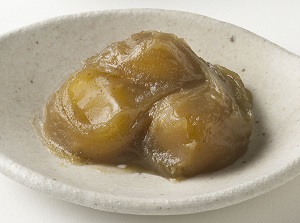
Sweets of chestnut in Obuse town
Photo by Nagano Tourism Organization
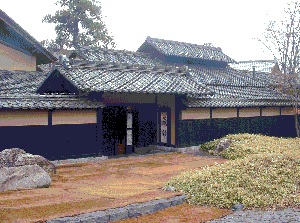
Restaurant of a sake brewery in Obuse
A national road runs through the town from north to south, and the main area is around the road in the center of the town.
There is Obuse station of Nagano Dentetsu railway at the northwest edge of the town, and we can visit the main area after walking about 500 meters.
Some sightseeing spots are in the small area.
Chestnut is one of local products in Obuse.
So, we can eat Japanese confectionery or food with chestnut in many cafes.
And there are a few sake breweries in Obuse.
Two breweries of Masuichi-Ichimura and Matsubaya are near the center of the area, and you can visit them.
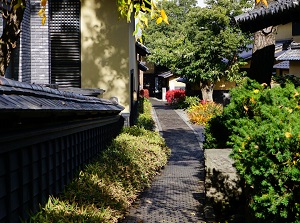
Kuri-no-Komichi
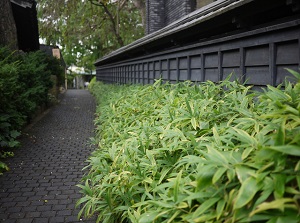
Kuri-no-Komichi
And, two alleys in the town are popular.
Kuri-no-Komichi (栗の小径) in the east part of the area is about 100 meters long.
"Kuri" means "chestnut".
The road is paved with blocks of chestnut and there are a few beautiful Japanese warehouses along the alley.
Another alley is Jin'ya-Koji (陣屋小路) in the west part of the town.
It is about 200 meters long.
"Jin'ya" means the government office in Edo Period (1603-1868), and there was Obuse Jin'ya near the alley.
Old earthen walls line along the alley.
To travel around Obuse town, you can use a rental bicycle.
A rental shop is near Obuse station, and a few shops are in the town.
And a shuttle bus is operated on Friday, Saturaday and Sunday from the middle of April to late November. (In Golden Week [Last week in April and the first week in May], in mid-August, from September to November, the bus is operated every day.)
The bus visits main spots in the town from Obuse station.
Hokusai-kan museum (北斎館)
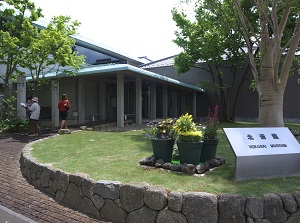
Hokusai-kan museum
Photo by Nagano Tourism Organization
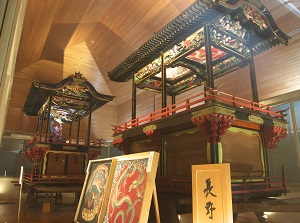
Floats for the festival in Hokusai-kan
Photo by Nagano Tourism Organization
Hokusai-kan is an art museum introducing the works of Katsushika Hokusai.
It is located about 0.6 km southeast of Obuse station, and is near the south entrance of Kuri-no-Komichi alley.
This museum was founded in 1976.
We can see many Hokusai's Ukiyoes and paintings.
And two floats for the festival are exhibited.
They have the ceiling paintings by Hokusai.
Takai Kozan Memorial Museum (高井鴻山記念館)
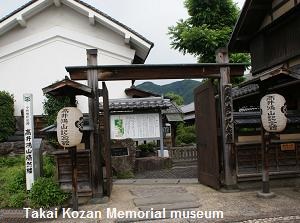
Entrance of Takai Kozan Memorial Museum
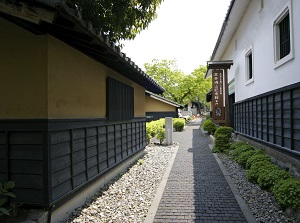
The Museum facing Kuri-no-Komichi
Photo by Nagano Tourism Organization
Takai Kozan Memorial Museum is a museum of Takai Kozan who invited Katsushika Hokusai to this town.
It is to the west of Kuri-no-Komichi alley.
The building of the museum is originally Kozan's resident.
They were his living place and storehouses.
One of the buildings was the atelier for Hokusai.
Kozan also created some paintings, so his works are exhibited in the museum.
We can enjoy the atmosphere of the 19th-century Japanese resident.
Ganshoin temple (岩松院)
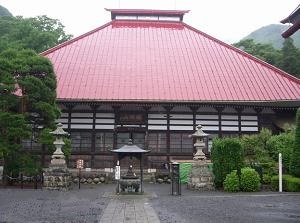
Ganshoin
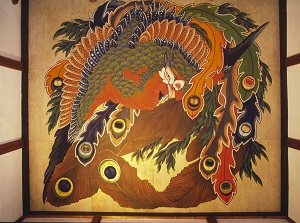
Ceiling painting by Hokusai
Photo by Nagano Tourism Organization
Ganshoin is a Buddhist temple of Soto sect which is one of major Zen sects in Japanese Buddhism.
("O" in the word is pronounced long, so it is read as "Ganshôin".)
It is located about 2 km east of main area and at the foot of mountain.
The temple was founded in 1472.
The feature of this temple is the great ceiling painting in the main hall.
It was created by Katsushika Hokusai in 1848.
He was 89 years old when it was completed, and he died the next year.
It is the picture of Chinese phoenix, and 4,400 gold leaves are used for the picture.
Jokoji temple (浄光寺)
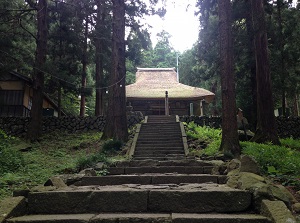
Jokoji
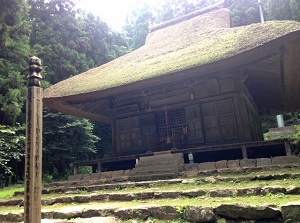
Yakushido in Jokoji
Jokoji is an old temple located 0.6 km south of Ganshoin.
(Two "o"s in the word are pronounced long, so it is read as "Jôkôji".)
Yakushido temple in this precincts is built in 1408.
The temple has thatched roof.
It is designated as a nationally important cultural property.
Other museums in the town
There area a few other museums in the town.
Museum of Lights in Japan (日本のあかり博物館) is the museum introducing the history of lights in Japan.
Especially there are many tools to light in the 17th to 19th centuries.
It is located along Jin'ya-Koji.
Obuse Museum (おぶせミュージアム) is the municipal museum of Obuse town.
It has an exhibition room for Nakajima Chinami (1945- ), a Japanese-style painter born in this town.
It is located to the northeast of the main area.
How to get here
From Nagano, about 22 minutes by limited express, about 35 minutes by local train of Nagano Dentetsu railway.

